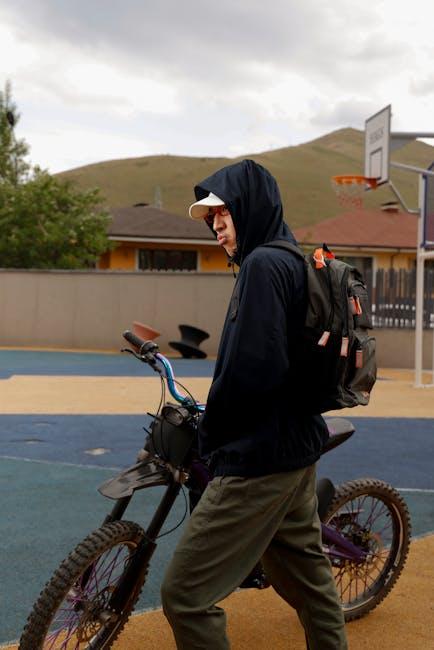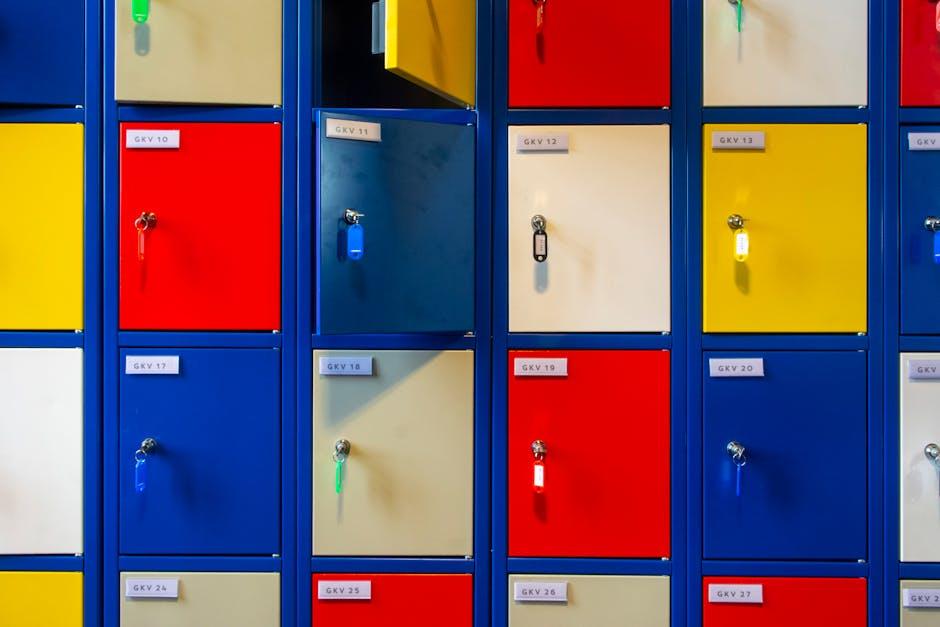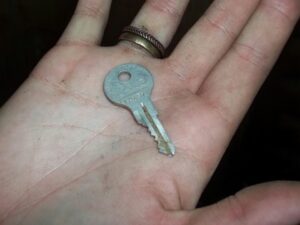As the crisp autumn breeze signals the start of a new school year in Minnesota, parents across the state are preparing their children for the exciting journey ahead. Amidst the flurry of school supplies and early morning routines, one vital aspect often goes unnoticed: lock safety. Ensuring that homes and backpacks are secured properly is a key step in creating a safe and worry-free environment for both kids and parents. In this article, we explore practical and effective back-to-school lock safety tips tailored for Minnesota families, helping you lock down security as confidently as you lock up your doors.
Table of Contents
- Choosing the Right Locks for School Backpacks and Lockers
- Ensuring Home Security During Early Morning and Evening School Runs
- Teaching Children Safe Lock Usage and Emergency Procedures
- Seasonal Maintenance Tips for Locks in Minnesota’s Climate
- Collaborating with Schools on Lock Policies and Safety Standards
- Q&A
- Wrapping Up

Choosing the Right Locks for School Backpacks and Lockers
When selecting locks for school backpacks and lockers, it’s essential to balance security with ease of use. Combination locks are a popular choice because they eliminate the need for keys, which children often lose. They come in various sizes and dial styles, offering flexibility based on the locker’s size or the child’s comfort level. For younger students, consider locks with larger numbers and simpler mechanisms, making it easier to remember and operate. Additionally, look for durable materials like hardened steel or zinc alloy, which can withstand daily wear and potential attempts to break in.
Another factor to consider is the lock’s weight and portability. A bulky lock may add unnecessary strain on a student’s backpack or slow them down between classes. Key locks, while sometimes viewed as less convenient, can offer peace of mind due to their simplicity and reliability but always equip your child with a spare key in case of loss. Take a look at the quick comparison below to help decide which lock type suits your child’s needs best:
| Lock Type | Pros | Cons |
|---|---|---|
| Combination Lock | Keyless, customizable codes, no lost keys | Can be tricky to reset, combination may be forgotten |
| Key Lock | Simple to use, strong and durable | Keys can be lost, requires spare keys |
| Smart Lock (Bluetooth enabled) | High tech, no physical key needed, remote access | More expensive, requires charging or batteries |

Ensuring Home Security During Early Morning and Evening School Runs
During the early morning and evening hours when parents are busy with school runs, it’s easy to overlook home security in the hustle. However, these are critical times when your home might be more vulnerable. To maintain a safe environment, consider installing smart locks that allow remote control and monitoring. This way, you can ensure the doors are locked even if you’re not physically there to check. Motion sensor lights near entrances not only deter potential intruders but also provide clear visibility as you approach your home in dim light.
Another practical approach is establishing a routine that integrates security checks into your daily school run. Create a quick checklist to follow before leaving or returning home. Below are some essentials to keep in mind:
- Lock all doors and windows securely, including garage and back doors
- Set alarm systems or smart security features if available
- Keep exterior areas well-lit with timers or motion sensors
- Inform trusted neighbors of your schedule for extra vigilance
| Security Tip | Benefits |
|---|---|
| Smart Locks | Remote access, real-time alerts |
| Motion Sensor Lights | Deter intruders, improve visibility |
| Daily Security Checklist | Consistent safety habits |

Teaching Children Safe Lock Usage and Emergency Procedures
Empowering children with the knowledge to handle locks safely is essential in fostering their independence while keeping them secure. Teaching them how to properly engage and disengage locks reduces the risk of accidental lockouts or injuries. Encourage your child to practice with both simple locks and combination or key locks under supervision, emphasizing the importance of not forcing mechanisms and always verifying if a door is securely locked. Reinforce good habits by setting clear guidelines on when and how locks should be used, such as always locking doors after entering a room or before bedtime.
Equally important is preparing children for emergency situations where quick, calm action is crucial. Familiarizing them with emergency procedures, including how to unlock doors swiftly and safely, can make a significant difference. Share these essential safety tips with your child:
- Know the locations of all keys and lock combinations.
- Practice unlocking doors calmly during drills.
- Understand when to seek help instead of trying to force a lock.
- Memorize emergency contact numbers.
| Emergency Scenario | Lock Action | Tip for Children |
|---|---|---|
| Fire Alarm | Unlock door quickly to exit | Stay calm and exit immediately |
| Locked Out | Use key or combination | Wait for adult if unsuccessful |
| Stranger at Door | Keep door locked | Alert a trusted adult |

Seasonal Maintenance Tips for Locks in Minnesota’s Climate
Minnesota’s extreme temperatures and seasonal shifts can be harsh on your home’s locks, especially as children head back to school. During the cold winters, locks can become stiff or freeze, making key insertion difficult or causing the mechanism to jam. To prevent this, it’s essential to apply a silicone-based lubricant – avoid oil-based products that attract dust and grime. Regularly wiping down the lock exterior from snow and moisture buildup also reduces corrosion risk and keeps the key turning smoothly. In the humid summer months, a quick spray of rust inhibitor will provide an extra layer of protection, ensuring your locks remain durable year-round.
As the seasons change, a small routine check can save you from unexpected lockouts or emergency repairs. Incorporate these simple steps into your home maintenance checklist:
- Winter: Use a de-icer spray if keys stick, and gently warm frozen locks with a handheld hairdryer.
- Spring & Fall: Tighten any loose screws and inspect lock alignment to prevent jamming.
- Summer: Lubricate moving parts and clean keyholes to clear debris from outdoor locks.

Collaborating with Schools on Lock Policies and Safety Standards
Engaging with local schools to understand their lock policies and safety protocols can empower parents in Minnesota to better support a secure learning environment. Schools often update their procedures based on new safety research and community needs, so staying informed through regular communication-like attending PTA meetings or subscribing to school newsletters-is vital. Sharing feedback or concerns respectfully creates a collaborative atmosphere where everyone has a stake in the security of the students.
To make this partnership effective, parents should consider the following actions:
- Review school-issued safety materials: These documents often outline emergency lock-down drills and visitor access policies.
- Ask about lock standards: Understand what types of locks and technology are in use, such as electronic card access or traditional deadbolts.
- Participate in safety workshops: Schools frequently host sessions for parents on recent security updates or best practices.
| Lock Type | Common Usage in Schools | Parent Role |
|---|---|---|
| Keyless Entry | Staff-only access areas | Ensure children do not share codes |
| Magnetic Locks | Emergency exit control | Familiarize with emergency drill procedures |
| Deadbolt Locks | Classroom security | Discuss concerns with teachers if issues arise |
Q&A
Q: Why is back-to-school lock safety important for parents in Minnesota?
A: As students return to school, ensuring home security helps protect your family’s belongings and provides peace of mind. Minnesota’s cold winters and occasional community safety concerns make robust lock safety a smart priority during this season.
Q: What types of locks should parents consider for their Minnesota homes?
A: Deadbolts with a minimum one-inch throw bolt are highly recommended. Additionally, smart locks that can be monitored remotely offer convenient control and alerts, which can be especially useful when managing busy family schedules.
Q: How often should parents check or update their home locks?
A: It’s wise to inspect locks annually, ideally before the school year begins. Situations such as lost keys, previous tenants, or weather-related wear and tear are all good reasons to rekey or replace locks immediately.
Q: Are there any specific safety tips for kids’ bedrooms or play areas?
A: Yes. Ensure that locks on bedroom doors are accessible from the inside in case of emergencies. For play areas or outdoor entrances, use childproof locks and secure gates to prevent unauthorized access.
Q: How can parents balance safety and convenience with their home locks?
A: Smart locks with keypad or biometric entry offer a good balance, allowing easy access without traditional keys. Many also allow temporary codes, so parents can control who enters and when-perfect for after-school care or house sitters.
Q: What role do schools play in lock safety awareness for parents?
A: Many Minnesota schools provide resources or workshops about home and community safety around back-to-school time. Checking with local school offices or parent-teacher organizations can provide valuable tips tailored to your neighborhood.
Q: Are there any seasonal considerations for lock maintenance in Minnesota?
A: Absolutely. Minnesota’s cold, wet winters can cause locks to freeze or corrode. Applying lubricant designed for locks and protecting entryways from snow or ice buildup helps maintain lock function year-round.
Q: What should parents do if they lose a key during the school year?
A: Promptly rekey your locks or replace them to ensure unauthorized individuals don’t gain access. This is particularly important if keys were lost near the child’s school or community spaces.
Q: Can parents involve their children in lock safety education?
A: Yes, teaching children basic lock safety-like not sharing house keys with friends and knowing how to secure doors-empowers them to be safe without being fearful. Age-appropriate conversations build responsibility and awareness.
Q: Where can Minnesota parents find professional help for lock safety upgrades?
A: Certified locksmiths and home security experts in Minnesota can assess your needs, recommend suitable products, and perform installations. Many offer free consultations during the back-to-school season to help families upgrade their safety affordably.
Wrapping Up
As the school bells ring and backpacks fill with fresh notebooks, ensuring your child’s safety extends beyond the classroom walls. By taking simple yet effective steps to secure locks and stay vigilant, Minnesota parents can create a safer environment for their kids from the bus stop to the front door. Remember, a little preparation today can unlock peace of mind tomorrow-helping your family focus on what truly matters: learning, growing, and thriving in the new school year.





